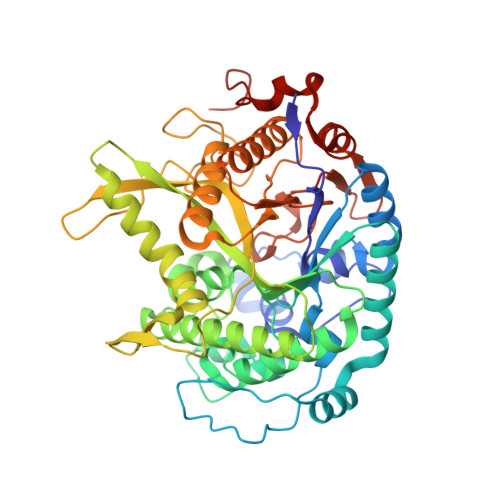Structural, Kinetic, and Thermodynamic Analysis of Glucoimidazole-Derived Glycosidase Inhibitors.
Gloster, T.M., Roberts, S., Perugino, G., Rossi, M., Moracci, M., Panday, N., Terinek, M., Vasella, A., Davies, G.J.(2006) Biochemistry 45: 11879
- PubMed: 17002288
- DOI: https://doi.org/10.1021/bi060973x
- Primary Citation of Related Structures:
2CEQ, 2CER, 2CES, 2CET - PubMed Abstract:
Inhibition of glycosidases has great potential in the quest for highly potent and specific drugs to treat diseases such as diabetes, cancer, and viral infections. One of the most effective ways of designing such compounds is by mimicking the transition state. Here we describe the structural, kinetic, and thermodynamic dissection of binding of two glucoimidazole-derived compounds, which are among the most potent glycosidase inhibitors reported to date, with two family 1 beta-glycosidases. Provocatively, while inclusion of the phenethyl moiety improves binding by a factor of 20-80-fold, this does not appear to result from better noncovalent interactions with the enzyme; instead, improved affinity may be derived from significantly better entropic contributions to binding displayed by the phenethyl-substituted imidazole compound.
- Structural Biology Laboratory, Department of Chemistry, The University of York, Heslington, York YO10 5YW, United Kingdom.
Organizational Affiliation:


















